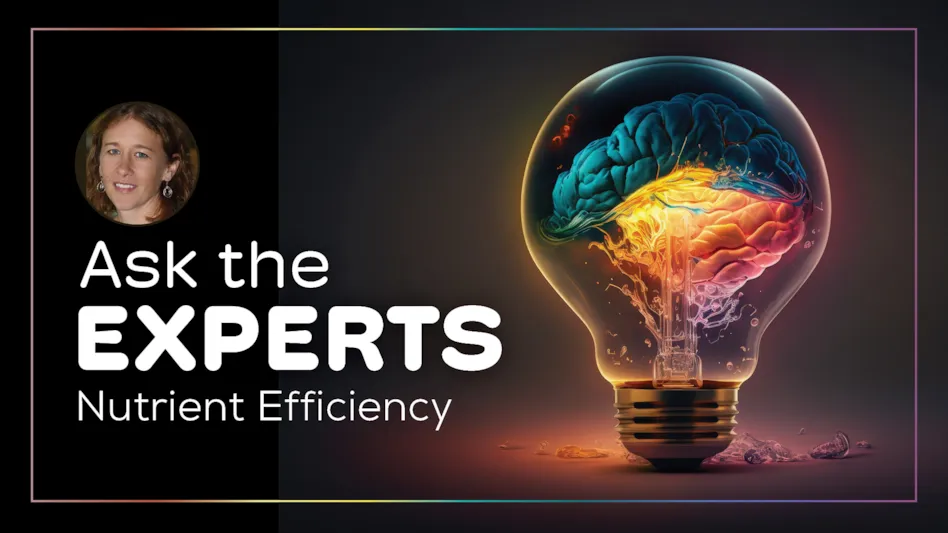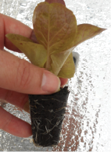
Are your leafy green and herb seedlings looking excessively tall and spindly? The problem may very well be lack of adequate light. This is a common problem in greenhouse production during dark, winter months. The problem is also found for those starting seedlings in indoor locations (i.e. sole source light) when there is insufficient lighting capacity installed.
Seedling basics
Hydroponic leafy greens and herbs are often propagated in substrates such as rockwool, oasis, or jiffy pots prior to transplanting in the hydroponic production system. For head lettuce and herbs, seedlings are typically transplanted when they have 3-4 true leaves and a sufficient amount of root growth.
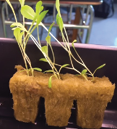
During seed germination, seeds may be germinated in chambers with humid, low-light conditions. As soon as germination has occurred (seed coat cracks and radicle emerges, it is important to move seedlings to higher light conditions. Otherwise, rapid and unwanted elongation of the seedling can occur.
For head lettuce, our Cornell CEA group has found we can produce robust seedlings with 3-4 true leaves in as little as 11 days if light and other conditions are optimized. During germination (sowing until radicle emergence, which takes place in 24 hours for lettuce) we keep substrate temperatures at 68° F (20° C). A low light intensity <50 µmol·m-2·s-1 can be used during this stage, but one must be sure to move seedlings to higher light as soon as the radicle emerges. We target a light intensity of 50 µmol·m-2·s-1 during the first 24 hours (daily light integral of 4.3 mol·m-2·d-1) which is enough to prevent excessive stretching of the seedlings while minimizing the tendency of supplemental lighting to dry out the surface of the medium. Following the initial germination stage, we maintain DLI at 22 mol·m-2·d-1 to push growth of seedlings.The DLI target can be met by lighting at 250 µmol·m-2·s-1 with a 24-hour photoperiod. Shorter photoperiods are acceptable if the light intensity is increased to provide the same total DLI target. Seedlings are ready to transplant into the hydroponic system when they have 3-4 true leaves. During days 1 to transplant, we maintain day/night temperatures at 75/66° F (24/19° C). This seedling production strategy has worked well for other leafy greens and herbs, with the exception that most other species take longer than lettuce for the initial germination stage.
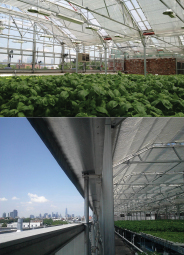
Symptoms of low light
Symptoms of low light include tall seedlings with excessive stem elongation, leaves may appear thin and strap like. Root mass will be smaller than well-lit seedlings. In general, the seedling production stage will take much longer for plants to form sufficient leaf and root mass if they are poorly lit. Seedlings will be more fragile and may show stress upon transplanting. Symptoms are exacerbated when seed is sown at a high density or when multiple seeds are sown in the same cell due to plant competition for light and shading of neighbors.
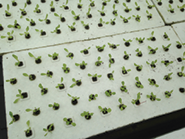
Strategies for success
Regarding light, the key points to produce compact and stocky seedlings are 1) move seedlings to adequate light as soon the radicle has emerged from the seed and 2) ensure that an adequate daily light integral (DLI) is provided to seedlings. Note that if domes are used to cover seeds during germination, these should also be removed as soon as the radicle emerges, otherwise young seedlings will stretch under the high humidity conditions. Also, we find best success when we begin fertilizer seedlings from day zero.
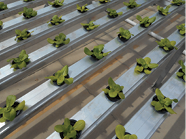
What is the minimum DLI for growth of quality leafy green seedlings? This topic has not been well researched but anecdotally we find poor quality seedlings (fragile seedlings with excessive height with poor root and leaf development) when DLI is less than about 6 mol·m-2·d-1, fair quality seedlings (a bit of excessive height and slower development of sufficient leaf and root biomass) when DLI is 6-10 mol·m-2·d-1, good quality seedlings when DLI is 10-15 mol·m-2·d-1, and excellent quality when DLI is between 15-22 mol·m-2·d-1. The above DLI suggestions should be taken only as rough guidelines and also depend upon the seedling or cultivar used. And again note, that besides poor seedling quality at low light levels, it will take longer for seedlings to be ready to transplant. This is typically a linear response, so if seedlings take 11 days at 22 mol·m-2·d-1 they will take double this, 22 days, at 11 mol·m-2·d-1 and 44 days at 5.5 mol·m-2·d-1.
At the seedling stage supplemental or sole source light can be used 24 hours a day, if needed, to supply a sufficient DLI. For example, consider seedlings growing under 100 µmol·m-2·s-1. If the lights are on for 12 hours, then 4.32 mol·m-2·d-1 is provided by the light: ([100 µmol·m-2·s-1 x 3,600 seconds/hour x 12 hours/day]/ 1,000,000 µmol/mol = 4.32 mol·m-2·d-1). If this is the only light source, seedling quality will be poor. If the same lights were operated 24 hours a day, they would provide 8.64 mol·m-2·d-1 resulting in fair seedling quality.
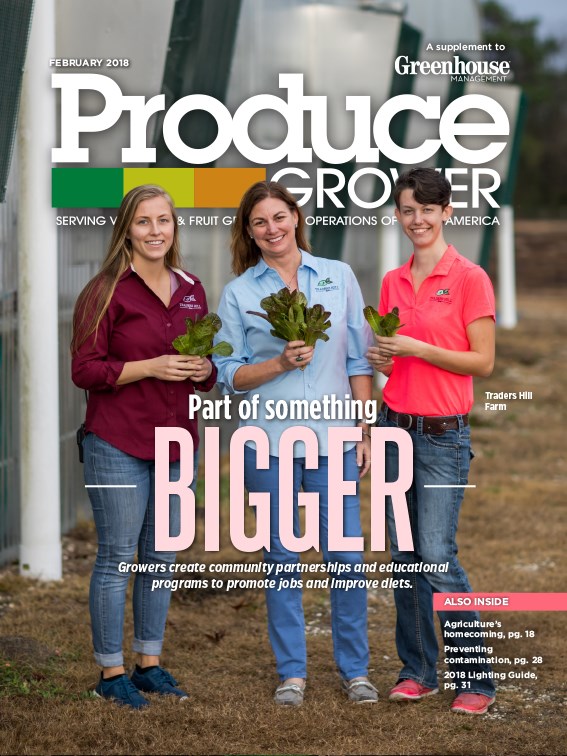
Explore the February 2018 Issue
Check out more from this issue and find you next story to read.
